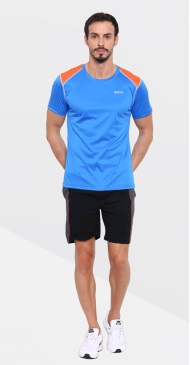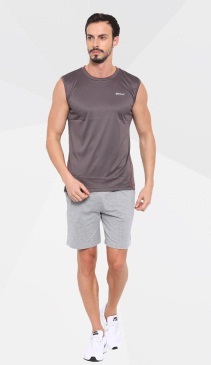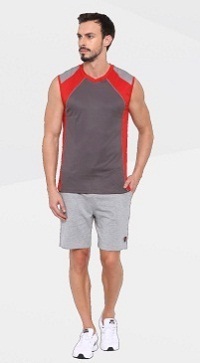FW
The Apparel Training and Design Centre (ATDC), India’s largest quality vocational training provider for the apparel sector hosted a part of admission awareness campaign for the BVoc courses in Apparel Manufacturing and Entrepreneurship, Fashion Design and Retail and will be organising free creative workshops at ATDC centres across the country. The first workshop will be held on April, 28, 2017 at ATDC Gurgaon. The main aim of the workshops is to enhance knowledge and creativity of fashion and develop interest on creating decorative textile and other articles. According to the company nowadays, a lot of pattern designs are now done using computer supported design software packages. The one-day creative workshop on ‘Fashion Going Digital’ will also focus on the impact of digital media in fashion. The unique ‘machine and man’ combination for a better look and feel of fashion designs will go a long way now.
From fashion design to apparel manufacturing, digital interference will be the key element for successful business. With the popularity of computer aided workflows a lot of fashion designers have started using computer graphic software packages to develop designs. In the apparel manufacturing sector also one can see numerous new techniques being executed.
The B.Voc courses at ATDC centres are regular Bachelor of Vocational Education program which is jointly offered by ATDC and Rajiv Gandhi National Institute of Youth Development (RGNIYD).
"Started as an extension to Macho, Sporto has been receiving tremendous traction from consumers. Having established its presence in almost 1,000 stores, the company sees this as just the tip of the iceberg. Navinn Seksaria, Director, JG Hosiery, in an interaction with Inside Fashion, talks about his expansion plans and the company’s growing expanse in rural markets and small towns, which he candidly calls are no more ‘small’, as they possess humungous potential."

Started as an extension to Macho, Sporto has been receiving tremendous traction from consumers. Having established its presence in almost 1,000 stores, the company sees this as just the tip of the iceberg. Navinn Seksaria, Director, JG Hosiery, in an interaction with Inside Fashion, talks about his expansion plans and the company’s growing expanse in rural markets and small towns, which he candidly calls are no more ‘small’, as they possess humungous potential.
Your brand is established well in intimate apparels. Take us through the brand’s journey so far

Sporto started as an extension to Macho, one of our mid-premium men’s innerwear brands. Sports cum casual wear, has been the trend in recent times. Hence, we started with gym vests as an extension to Macho. It got tremendous response and we decided to scale up and offer the full range of casual wear and sportswear. We launched a TVC last year and new distribution channels.
We have a whole range of intimate apparels encompassing leisure and sportswear. The product range includes T-shirts, shorts, capris, track pants in regular collection. Apart from that, there is an athlete collection made from ‘Fast Dry’ fabrics. In total, there are almost 40 products. Our target customers are men in the age group 16 to 35 years in A & B segments.
Do you think growth now centers around small towns and it’s important for brands to focus on them?
Small towns are no more ‘small’. They are almost as big as some cities were just a decade back. All towns and cities have immense potential and with the presence of media and Internet almost everywhere, it is becoming one common market. Since Sporto targets mid-premium segment, we are getting equally good response from cities as well as towns. From sales volume point of view, Mumbai vs RoM (Rest of Maharashtra), few years back, was around 3:2 or 1:1, now with growth of smaller towns1, the scales are tilting and RoM is giving us more volumes.
What are the growth, opportunities and challenges in small towns for apparel business.
Small towns have lesser brand-crowd, hence entry barriers are easy. They have good consumption as well. What is challenging is getting the right distribution partner. With good products and networking that can be overcome in a short time. Talking about competition from unbranded players, the unorganised sector is present in all markets, hence, not necessarily in small towns alone. But it affects only the economy segment.
What is the consumer’s understanding of fashion segments in small towns?
With the spread of satellite channels and Internet penetration, the fashion space is becoming more uniform. The consumer in Kolhapur is more updated and aware about latest trends. The gap between him and Mumbai consumer have become nil or negligible. This is good for brands as they can offer better product portfolio to all consumers. It also makes brands work harder as they always need to keep themselves updated.
How are you creating brand awareness in small towns? Tell us about your branding strategies.
TVC is the best media to create universal reach. But there needs to be a holistic branding strategy involving all channels of media such as outdoor, print and digital and social media. It has come as a surprise to us that smaller towns are ready to pay equivalent or better prices, there is no price constraint if the product is good.
How many EBOs, MBOs and LFS do you have? What is the share of earning in percentage terms from each format?
We are primarily focusing on the MBO segment and have been receiving tremendous response. We have established our presence in almost 1,000 stores, although it is just the tip of the iceberg. As for EBOs, we are not looking at them in this segment. Some regional LFSs have already taken our products and we are in discussion with national LFS.
What do you think is the future of etailing, and brick & mortar formats?
This category is perfectly suited for e-tailing but surprisingly it has not reflected in consumer behaviour. We have a good presence across all e-commerce platforms and e-commerce enabled website. We are getting a good response but feel consumer behaviour will require lot of change to get big numbers. As for our online presence, we are present in Myntra, Amazon and Flipkart. The advantages are obvious that it can establish connect with every nook and corner of the country directly with consumers.

In online retail, consumers expect discounts just like in white goods. But in this segment, the logistics costs become very high due to comparatively low ticket sales value, hence distribution cost gets absorbed in logistics. Further, consumer behaviour is yet to see big change as far as this category is concerned.
Give us details about your new collection, theme, for the season? Nny innovations lined up for this season?
New products are being added, and we are extending the ‘Fast Dry in Tracks’ and shorts too. Apart from men’s wear, we are planning to extend our offering in women’s sportswear too.
Did business meet expectations this season since the brand is new?
After the disruptions of Nov-Dec, business has been robust in the last two months. We have received a good response for our products. We are already present in almost 1,000 stores across the country within a short time.
What are your expansion plans? Do you plan to explore new markets in India and abroad?
We hope to ramp up our distribution fast and target to grow 10 times in next two years. We have a distribution setup in the Middle East where we have received good enquiries. We aspire to clock in Rs 1,100 crores revenue this year. We expect 20-25 per cent consistent growth in the next 4-5 years. We want to make the Indian hosiery industry the global leader. With the potential of talents in engineering, supply chain combined with insights in marketing, and availability of good raw materials, I hope this should be achievable within next decade.
QUOTE
Navinn Seksaria, Director, JG Hosiery
“Since Sporto targets mid-premium segment, we are getting equally good response from cities as well as towns. From sales volume point of view, Mumbai vs RoM (Rest of Maharashtra), few years back, was around 3:2 or 1:1, now with growth of smaller towns1, the scales are tilting and RoM is giving us more volumes.”
“We are primarily focusing on the MBO segment and have been receiving tremendous response. We have established our presence in almost 1,000 stores, although it is just the tip of the iceberg. As for EBOs, we are not looking at them in this segment. Some regional LFSs have already taken our products and we are in discussion with national LFS.”
“We have a good presence across all e-commerce platforms and e-commerce enabled website. We are getting a good response but feel consumer behaviour will require lot of change to get big numbers.”
Sobel Westex is buying Baltic Linen. The acquisition will result in making Sobel Westex one of the world’s largest textile companies. It joins two dominant textile companies to create a US-based, global enterprise that will be highly competitive across all textile sectors. The global union will result in more innovative products, improved guest experience, personalized service and increased attention to detail.
Sobel Westex, founded in 1981, makes table linens, terry, sheets, blankets, pillows, bathrobes, bedding products, and pool products. The company sells its products online and serves the hospitality industry. Baltic Linen, founded in 1936, designs and produces textile products for home fashion, institutional, and hospitality markets. It offers bed and bath products, beddings, towels, coordinated baths, sheeting, towels, robes, aprons, table linens, and blankets. Its products are used in cruise lines, fine hotels, resorts, and spas, healthcare and textile rental industries and retail chains.
The combined strength of these two companies is a game changer that will allow them to increase their design mix and product offering, giving them the ability to better serve their domestic and international markets, creating an exciting opportunity for their customers.
This transaction will create a leading textile company that is differentiated by its ability to deliver cutting-edge products using an unparalleled global infrastructure of inventory and distribution capabilities to service their customers worldwide.
Pakistan has introduced a package for the textile sector. Textile exporters have to get themselves registered in order to be eligible for incentives. The registration system has been streamlined and payments will be made as soon as applicants deposit all required documents.
Meanwhile a textile spinning and stitching institute is under consideration. Pakistan is targeting exports worth $35 billion by 2018. The top five textile sectors have been given a zero-rated sales tax regime. Sales tax and customs duty on imports of textile machinery and cotton have been abolished. A number of projects of power generation through hydel, coal, solar, wind, and other resources have been initiated.
About 10,000 megawatts electricity will be added to the system by 2018 and 30,000 megawatts within the next few years. A network of roads, highways and motorways is being laid to integrate different regions of the country. Engineers and managers at industrial units will be trained to adopt new technologies to manage complex production processes in developing products demanded internationally. Emphasis will be placed on skill development.
New export destinations including Mexico, Central Asia, Africa and Doha are being looked at. About 60 per cent of Pakistan’s exports go to ten countries, namely, USA, China, UAE, Afghanistan, UK, Germany, France, Bangladesh, Italy and Spain. Right now Pakistan’s exports to South America, Africa, Central Asian Republics and Russia are less than ten per cent of the total exports of Pakistan.
India’s mill use of cotton declined in 2016-17 due to high domestic and international cotton prices. However, despite a below normal monsoon forecast this year, the Indian textile industry's cotton use is now projected to recover by one per cent in 2017/18. In addition, cotton imports from key markets like China and Vietnam are also set to grow by four to six per cent, thereby increasing India’s position in the domestic and global cotton markets.
India’s cotton exports are projected to decline by 23 per cent in 2016-17 partially due to the delay in harvesting earlier this season. Similarly, cotton prices have begun showing a downward trend, which could enhance mill uptake going forward. However, expectations of higher cotton demand from China and a forecast of El Nino may still keep cotton prices higher.
In 2016-17, farmers continue to realise better prices for their produce since cotton prices have remained firm. Cotton arrivals are in full swing now and the gap of arrivals as compared to last year has narrowed down considerably.
The Cotton Corporation of India has been purchasing cotton at commercial rates during the current season and might have procured more than 1,00,000 bales, which will be available for textile mills later in the season.
South Korea’s popular fashion labels are rushing to enter Europe and America’s prestigious department stores. Fila Korea, a shoe and apparel brand, will debut at Bloomingdale’s, the department store chain in the United States. It will open Fila stores at Bloomingdale’s nine locations in the first half of this year and launch additional stores at 30 other Bloomingdale’s department stores across the US in the latter half of this year.
Fila already operates outlets in Kohl’s and Macy’s – American department stores that carry budget clothing and fashion-- but it is the first time the company is adding stores in Bloomingdales.
In Great Britain, Samsung is expanding its presence through its men’s apparel brand Juun. J. It opened its Juun.J store in Harrods, a London-based luxury department store well known to be selective about its offerings of brands, in 2013 and has operated a pop-up store, temporarily introducing its latest collection, in recent months.
Handsome, a fashion unit of Hyundai, opened its men’s apparel System Homme in Galeries Lafayette in Paris for the first time as an Asian fashion label. It is also operating a pop-up store of the female lineup of System in the French department store. The pop-up store is located on the same floor with global fashion names like Kenzo, Isabel Marant, and Carven, and it is the first time for a Korean fashion brand to run a pop-up store in Galeries Lafayette.
"Canopy, award winning environmental not-for-profit, announced that CanopyStyle, which focusses on the elimination of ancient and endangered forests from the production of rayon and viscose fabrics, has hit the significant milestone of 100 committed brands. Kathmandu, SVILU, Raquel Allegra and Duffield Design are the latest to join to groundbreaking initiative with strong forest conservation sourcing policies making the CanopyStyle 100 a reality."

Canopy, award winning environmental not-for-profit, announced that CanopyStyle, which focusses on the elimination of ancient and endangered forests from the production of rayon and viscose fabrics, has hit the significant milestone of 100 committed brands. Kathmandu, SVILU, Raquel Allegra and Duffield Design are the latest to join to groundbreaking initiative with strong forest conservation sourcing policies making the CanopyStyle 100 a reality. The CanopyStyle 100 consists of 100 global brands, designers and retailers who have strong, sustainable sourcing policies for their rayon and viscose fabrics and are united in their conservation vision for our global forests.

Manu Rastogi, Textile R&D and Responsible Materials Manager of Kathmandu points out the strength of the collective action being driven by the CanopyStyle 100 is how her company will be successful in addressing the critical issue of protecting endangered forests from ending up in fabrics. They are inspired and excited to join Canopy and The CanopyStyle 100 to forward lasting protection in the world’s forests, said.
Sourcing sustainably
These fashion and apparel leaders, representing over $115B in annual revenue, have all committed to end sourcing of ancient and endangered forests or controversial sources in fabrics from their supply chain, and to kickstart sourcing next generation closed loop rayon and viscose from recycled clothing and left-over straw. They will also put their global might behind Canopy’s work to advance conservation solutions on the ground for landscapes of hope including Quebec’s Broadback Forest, Indonesia’s Leuser Ecosystem and British Columbia’s last stands on Vancouver Island.
The Beginning
The CanopyStyle initiative was launched in October 2013 with five fashion brands signing on as early ignitors, and in just over 3.5 years has become the fastest moving environmental initiative in the apparel industry. The question for customers now is, if my favourite brand isn’t part of CanopyStyle, then why not? No-one wants the last stands of 1,000-year-old trees cut down to make their jeans or t-shirts. The CanopyStyle 100 is acting on that and as a result we see similar sourcing commitments from nine out of the world’s top 10 largest viscose producers, said Nicole Rycroft, Executive Director, Canopy. One hundred clothing companies are now waiting to see suppliers like Fulida, Xinxiang Bailu and Shandong Yamei move forward on CanopyStyle Audits in order to meet their policy requirements.
Now that the US is more or less out of the TPP, Japan is mobilizing remaining members. Japan, as leader, is seeking a path forward for free trade in Asia. This country is now the largest member of TPP. A revived TPP with Japan at the head could dent China’s hegemony in the region.
The pact would boost Japan’s real gross domestic product by 1.11 per cent. Preserving the TPP could also stem the anti-globalist tide that has swept the world in the form of Trump’s ascent and the UK’s move to leave the European Union.
The new US administration has taken a fairly short-term approach to trade, showing little interest in creating rules for free trade under multilateral framework -- the founding principle of the TPP. Japan's plan of advancing that cause with other nations and dealing with the US one-on-one for now leaves room for an American return to the framework in future.
However, a revamped TPP does present tough questions for Japan, such as what to do with import quotas for rice and milk that were set with eleven trading partners, including the US, in mind. Japan will also face the challenge of responding to US requests one-on-one for greater market liberalization than the TPP would have provided.
The Directorate General Customs Valuation (DGCV) has reviewed textile invisible coated lining material fabric and textile lining material fabric customs duty under section of 25(9) 1969. There last time a determination of textile lining material took place was in year 2013, so, a revision was done according to trends prevailing in the current international market.
Meetings were held in the month of January, February, and April for undertaking the review. Every stakeholder was requested to submit relevant documents. However, due to different gram-mages, thicknesses of a sample the documents were not submitted by any stakeholder and importers and representative of trade organizations argued that prices of an item differ globally. The highest stress was on textile invisible coated fabric which is similar item is being assessed and released at the lesser rate ranging from $2.30 to 2.65 which has twisted un-stability in the local market.
Later, various methods such as: valuation methods, transaction value method, identical/similar goods value methods were accepted by the Directorate. But these could not be exclusively relied on. Thereafter, market inquiry as envisaged under Section 25(7) of the Customs Act, 1969, was conducted. Online values were checked and conversion costs from constituent material at the country of export were not available as computed value method in section 25(8) of the Customs Act, 1969 could not get applied. All the information was evaluated and analyzed for the purpose of determination of customs values. Accordingly, the Custom values of textile lining material fabric and textile invisible coated lining material fabric were determined under the Section 25(9) of the Customs Act, 1969.
American outdoor apparel company, Patagonia, has come out with a HyperPuff line, comprising hoodies, parkas, and jackets. Patagonia’s latest line combines the best of both synthetic and down.
Down creates a tangible area of warmth around the body but it’s useless when wet. Synthetic materials continue to insulate even while exposed to moderately wet conditions and provide excellent breathability during vigorous physical activity.
But one of the biggest problems with synthetic insulation is its lifespan and inability to retain loft over time, as opposed to regular down, which typically lasts decades. So the HyperPuff line features a synthetic puff jacket that actually puffs, mimicking the warmth of goose down while upholding the increased durability offered by synthetic materials.
Hyper Puff does not use Primaloft insulation. The insulation was developed internally with another supplier in Asia who had access to a special non-woven machine which orients fibers vertically instead of horizontally, like traditional insulation. The product’s unique ability to compress and spring back to life is unprecedented, allowing for easy transport of an otherwise bulky jacket in a small stuff sack. When removed from the sack, the jacket puffs up immediately.
The decision between wearing synthetic or down in the coldest and wettest of places no longer remains a compromise. HyperPuff provides the best of both worlds and ensures continuous warmth — even when wet.












